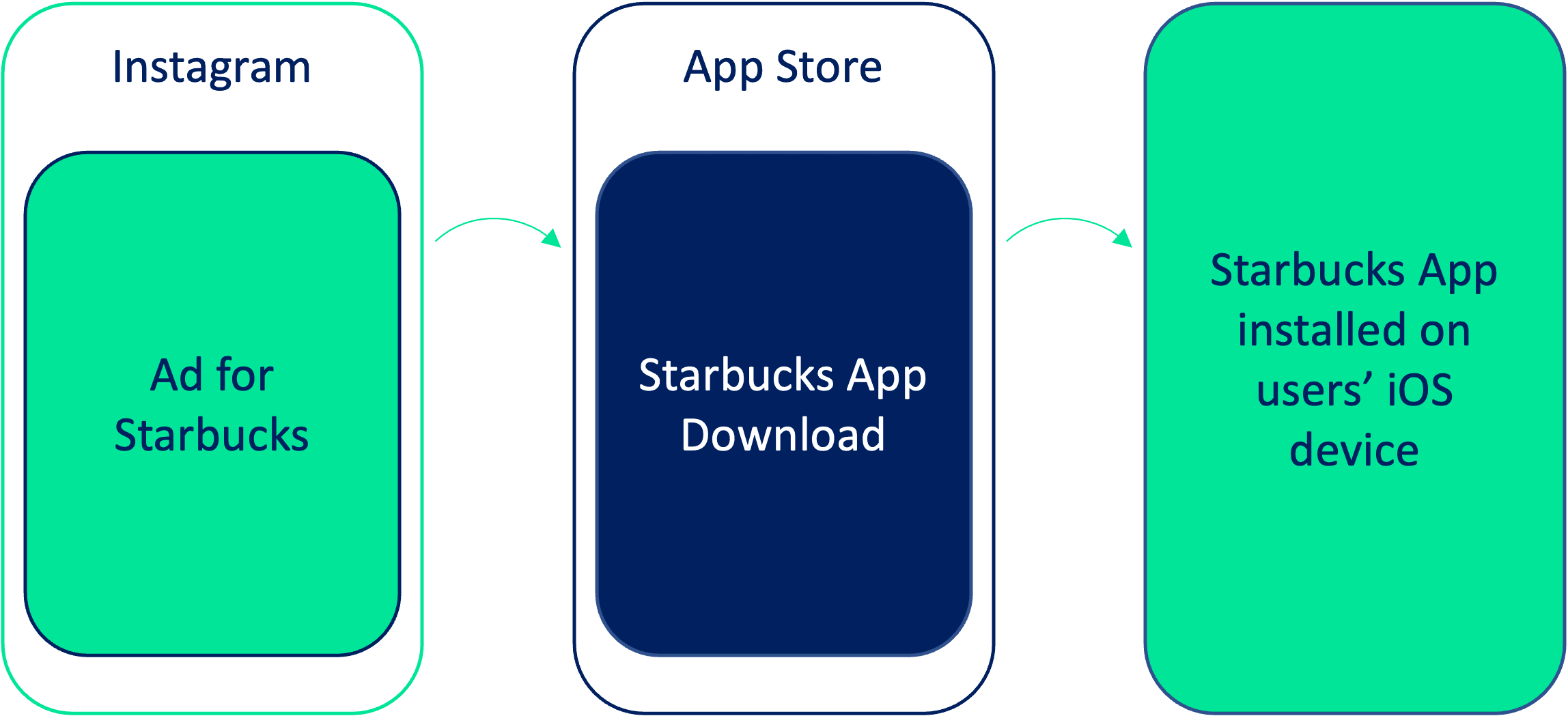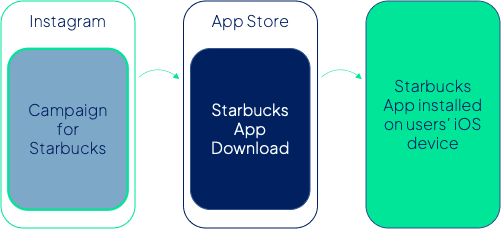Solutions
Teams
Built for your whole team.
Industries
Trusted by all verticals.
Mediums
Measure any type of ad spend
Platform
Use Cases
Many Possibilities. One Platform.
AI and Automation
The Always-on Incrementality Platform
Teams
Built for your whole team.
Industries
Trusted by all verticals.
Mediums
Measure any type of ad spend
Use Cases
Many Possibilities. One Platform.
AI and Automation
The Always-on Incrementality Platform

Do you still need an attribution platform for iOS Apps ?
Recently there was an article well written by Eric Seufert* from Mobile Dev Memo calling out the app store original flaw being the lack of ability to track marketing performance without needing to rely on 3rd party solutions.
UTMs (Urchin Traffic Monitor) is a common method of tracking the source of traffic by adding parameters to links on the internet.
For example – if a user seeing an ad on Instagram would click to download the Starbucks app, a url carrying a UTM would look something like this: Starbucks App on the App Store.
The tracking flow for such a scenario would look like this:

Starbucks would have ready to go reporting via the iOS store showing how many conversions arrived via instagram. While this would still carry many of the flaws last-touch attribution carries with it, it would be BY-FAR better than how tracking flow looked like as a result of the lack of UTMs:

As the saying goes: A chain is only as strong as the weakest link.
When Apple launched App Tracking Transparency, they eliminated the ability of gathering device level data without users explicit approval, while in a way, fixing the original flaw by introducing a privacy centric attribution framework called SKAdNetwork.
This new framework provided a direct method of attribution for campaign performance without any requirement for 3rd parties to be involved in the process.
The caveat of this methodology is that rather than provide performance tracking for an individual install > SKAdNetwork offers tracking only in aggregate form, to protect users’ privacy.

If you read what the MMPs are saying , they would be telling you that a large % of users opt in for tracking, and as a result, the MMP still has an important role, resolving the original flaw of the app store.
However, stats show that opt in % for tracking are in the sub 10% , and in order for an MMP to match between a click and an install, a user must opt in for tracking for both the publisher app (where they see the ad) as well as the advertiser app.
In reality, some of the MMPs are in breach of Apple’s privacy policies, by continuing to do performance tracking using a technique known as fingerprinting.
This method has pros and cons, but while Apple states that this goes against policy, there is currently no real signs of enforcement for this clause.
The real reasons why MMPs remain valuable to iOS advertisers are the following:
Most of the MMPs built layers on top of SKAD to manage the conversion value schema
Apple has not made tracking “easy” for advertisers, and companies dedicated for this topic, have been able to build more advertiser friendly tools to handle tracking, even though, a sophisticated advertiser would be able to handle the SKAD schema themselves
Postbacks to media vendors. The biggest asset an MMP has is the integration with the thousands of ad networks, DSPs, and advertising platforms. Those rely on attribution signals to optimize ads delivery to identify which placements, audiences, creatives, and so on – lead to conversions for the advertisers campaigns.
Could advertisers remove their MMPs for iOS ?
In theory, yes, but in practice, currently most would not do so.
The resources required to handle SKAD schema, and build a reporting infrastructure to match the simplicity of a 3rd party dedicated platform would create substantial upfront costs that most companies would prefer avoiding.
Even if in the long term, operating an iOS tracking stack using only SKAD would be more economical for most companies – as long as MMPs provide a value – most would not take this step.
However, as Google Android is also heading towards an aggregated tracking limitation (Android Sandbox), the value of an MMP for an app developer may diminish over time, making the MMP a pure analytics platform, rather than providing the attribution itself.
When that happens, internal BI platforms, or solutions such as Clarisights, Funnel.io, Supermetrics, and others, may compete for the position of an MMP as the current central analytics hub of mobile app companies.
My opinion is that the attribution solutions will need to reinvent themselves and change the core product offering from attribution to analytics. This will take 2-3 years, but in my view, is the inevitable future.
INCRMNTAL does not rely on attribution data, so for our platform, we can remain on the sidelines and allow the market to do what the market does. When integrating data with customers, what we care about is the absolute truth, in aggregate – but not in relation to attributed data. Our platform wants to know how many total installs an iOS app had in a country, in a given day. Whether if this or that form of attribution claims the channel generated 50 or 500 installs, is an irrelevant data point for our platform.
Our platform does allow customers to integrate with us using both attribution solutions, as well as analytics platforms.
Here are just some of the platforms that are integrated with us.

Maor is the CEO & Co-Founder at INCRMNTAL. With over 20 years of experience in the adtech and marketing technology space, Maor is well known as a thought leader in the areas of marketing measurement. Previously acting as Managing Director International at inneractive (acquired by Fyber), and as CEO at Applift (acquired by MGI/Verve Group)